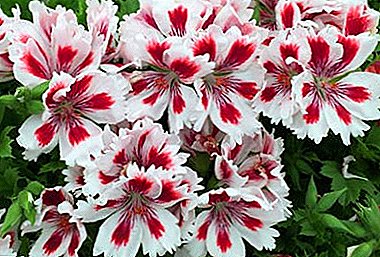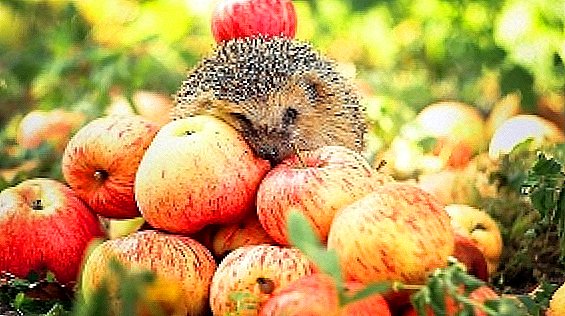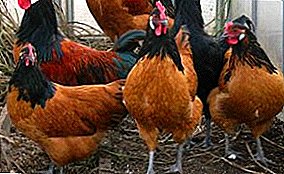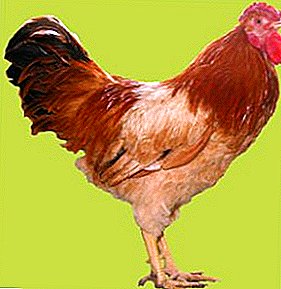 Both experienced and novice rabbit breeders often face the problems of sudden illness and extinction of part or the whole population of these furry animals. How to understand that a rabbit dies, why such problems appear with adults, what diseases and other factors can affect the high mortality of the population at an early and more advanced age, as well as what preventive measures should be used to prevent and prevent such phenomena, we will talk in our article.
Both experienced and novice rabbit breeders often face the problems of sudden illness and extinction of part or the whole population of these furry animals. How to understand that a rabbit dies, why such problems appear with adults, what diseases and other factors can affect the high mortality of the population at an early and more advanced age, as well as what preventive measures should be used to prevent and prevent such phenomena, we will talk in our article.
How to understand that the rabbit is dying
Unfortunately, rabbits are quite susceptible to various kinds of viral diseases, and also often suffer from epidemiological waves, capable of killing most of the livestock. In particular, weakened immunity in these animals at an early age, from the first day after birth to one month old.
Important! From birth until 1 month old baby rabbits should be carefully and regularly examined for diseases and symptoms. After one month of age, examinations are continued with a range of 2 weeks. It is also important to examine the female and male before and after mating.
The main difficulty in identifying that the rabbit is dying is the absence of pronounced symptoms in most diseases. But at the same time, epidemics may flare up at one moment, leading to the death of animals, due to the long course of the disease in their bodies in a latent form.
In order to prevent the occurrence of such outbreaks of bacteriological and viral epidemics, it is important to conduct inspections and follow all the rules of care and maintenance of long-eared pets.  The following is a list of key indicators that can characterize an absolutely healthy rabbit with a good appetite and proper diet.
The following is a list of key indicators that can characterize an absolutely healthy rabbit with a good appetite and proper diet.
Did you know? Everyone knows the fact that both rabbits and hares jump beautifully. But it is interesting that the rabbits, despite their domestication, easily jump a meter or more. In this case, the longest of the officially recorded jumps of a rabbit was 3 meters and 27 centimeters.Him:
- mucous membranes do not produce any discharge;
- wool cover glitters and shimmers in the light;
- the rabbit breathes with a frequency of 1 per second;
- his pulse is not more than 160 beats per minute;
- body temperature does not exceed 39.5 degrees;
- urine and feces have a dark, saturated color (if this factor changes, and feces lighten, then this is the first sign of the onset of the disease).

A pet afflicted with any ailment is easy to determine from the general mass for a number of symptoms and factors that indicate a malfunction in his body, namely:
- breathing is difficult or confused;
- the rabbit is constantly coming to the drinker, he is tormented by thirst;
- mucous membranes (mostly eyes and nose) secrete a turbid liquid;
- the hair of the animal loses its luster and begins to actively fall out in scraps, leading to partial or complete baldness;
- on the body revealed incomprehensible neoplasms;
- the rabbit had paralysis;
- revealed abnormalities and disorders of the stool in the animal.
Familiarize yourself with the treatment and prevention of rabbit diseases, ornamental rabbit diseases, dangerous rabbit diseases for humans.
Why do adult rabbits die
Nature has endowed rabbits with very valuable qualities, because their meat contains a great variety of useful minerals, vitamins and microelements, and their fur is considered valuable and is used for the production of outerwear, hats and shoes.
But along with high utility, animals are characterized by increased vulnerability to many diseases.
Next, we consider what symptoms the most common diseases among rabbits have, how to cure such a disease, and what instructions should be followed to speed up the healing process. 
It should be noted that all the diseases listed below are equally common among ordinary rabbits and among decorative breeds.
Infectious diseases
Most often, spontaneous epidemics caused by infectious diseases cause the greatest damage to a herd of rabbits, and therefore we will begin with these ailments.
Did you know? The average lifespan of wild rabbits in natural conditions is about 1 year, while domesticated animals, with proper care and observance of all conditions of detention, can live from 8 to 12 years.
VGBK
VGBK (viral hemorrhagic disease of rabbits) is one of the most terrible diseases. Another name for this disease - the plague.
The whole seriousness of this infection lies in the fact that not only the rabbit, but also the person in contact with it can fall into the range of its defeat. The greatest susceptibility to infection with UBHK in young animals up to 1 month, as well as in pregnant rabbits.  Damages of a liver and lungs of rabbits at VGBK
Damages of a liver and lungs of rabbits at VGBK
Carriers of infection are ticks, fleas and lice.
In the early stages, it is impossible to determine the disease, since during the incubation period all the life processes of the animal continue to run their course without the slightest visible disturbances. When the disease becomes acute, as a result, half of the herd dies and more.
Important! The corpse of a rabbit who died from the plague is subject to cremation. In this case, a person must take all precautions by wearing a protective respirator mask on his face, eye glasses, rubber gloves on his hands.The dead rabbit has an excessively large liver, covered with black spots. Similar dark spots cover mucous membranes, face, ears and paws. Sometimes spots are visible on the entire surface of the body.
The disease is asymptomatic, but when examined by an experienced specialist, it can be diagnosed.  From VGBK spend vaccination
From VGBK spend vaccination
Treatment is prescribed by a veterinarian in the form of taking antibiotics. Unfortunately, the dynamics of recovery is extremely rarely observed in diseased individuals, and therefore the only form of fighting infection and preventing an epidemic is slaughter.
Learn how to rid the rabbits of fleas, ticks, ear ticks.
Myxomatosis
Along with other diseases with a high mortality rate among rabbit herds is myxomatosis. This dangerous disease can be reflected in two forms: nodular and edematous.
The first is distinguished by the fact that small nodules, hard to the touch, similar to boils, which gradually grow to the size of a pea or bean, jump up all over the body of the animal.  Nodular form of myxomatosis
Nodular form of myxomatosis
The edematous form is characterized by extensive edema, it is practically not curable. The main places where mycots are most often detected include the head, anus and genitals.
When myxomatosis occurs in an animal, inflammation occurs in the mucous membranes of the eyes. Symptoms include: lethargy, slowness, high fever, refusal to eat, and inactivity.
Familiarize yourself with rabbit cell disinfection methods.
An infected individual quickly dies, as the disease is among those that are not amenable to treatment. The corpse of an animal and those items with which it came into contact, including the clothes of the owner, must be disposed of, it is better to burn them.
How to cure myxomatosis: video
Pasteurellosis
Pasteurellosis is also a common ailment among pets. If a focus occurs, the epidemic will cover all individuals without exception. All age categories are susceptible to the disease. Birds and rodents are carriers of the virus.
Among the first symptoms of infection is a sharp increase in the temperature of rabbits to 42 ° C. Their breathing quickens, and their condition worsens before their eyes: they become lethargic, do not touch food, do not move well.
In just a few days, all signs of the disease disappear, and the temperature of the animal drops to 33 ° C, which leads to death. Also, pasteurellosis is often accompanied by rhinitis (turbid discharge from mucous membranes, comparable to the common cold).
Important! The skin of the dead animals are disinfected, and the entrails are disposed of. At the same time meat is allowed to be used in food.
Pasteurellosis, unlike myxomatosis, is curable. A veterinarian prescribes a course of antibiotics, among which chloramphenicol or biomycin are often used. As a preventive vaccination.
About rabbits: video
Coccidiosis
Coccidiosis is a viral infection that affects the stomach and intestines of an animal. This disease has two stages of development: in the body and in the environment. From 60 to 90% of the animals in the herd may die as a result of infection with such a disease affecting the liver and intestines.
Hepatic coccidiosis lasts up to 2 months, and the symptoms in an animal are expressed by lethargy and inactivity. The intestinal form retreats after 10 days, taking the pet's life with it. The rabbits are incubated for 3 days and the visual symptoms are jaundice and blood stool.
All age groups of rabbits are at risk of infection, but those that have not reached the age of two months are most affected. It is possible to diagnose this disease in the course of medical research.
Find out which drugs can be used to treat rabbits.According to the results of tests and examination by a veterinarian, two treatment options for coccidiosis can be prescribed:
- The use of iodine solution at the rate of 0.01% per day per 100 g of body weight. For pregnant females, the dosage is increased after 25 days of gestation. Rabbits are treated in the same way with a dosage of 2 times less.
- Treatment with sulfonamide solution. The animal is treated 2 times a day for 5 days.
Prevention of coccidiosis: video
Non-contagious diseases
In addition to infectious diseases, other illnesses can occur that can lead to the death of a rabbit population. The following discussion focuses on the most common non-communicable diseases that can cause serious harm to the body and health of a long-eared pet.
Flatulence
Often, inexperienced breeders make a number of mistakes in the preparation of the diet of their pets, the result of which imbalance is flatulence (bloating, or tympania).
To avoid such a disease, you should follow the prescribed rules for the care of rabbits. Before you enter into the diet of the animal new types of food, they need to be checked for the presence of adverse components. It is better to buy food in specialized stores, checking the certification of the selected product.
Important! Rabbits can not be fed rotten hay or frozen root vegetables.If you identify tympania at an early stage, then it can be cured with lactic acid and 10% ichthyol solution. Until the source of flatulence is ascertained, all food is removed, and the rabbit itself is transferred to a discharge mode of 12 hours in length so that all processes in its stomach and intestines return to normal.

If flatulence has reached the last stage, when it becomes visible even with the naked eye, then any treatment methods will be ineffective. In this case, the animal must be slaughtered.
Find out if rabbits can be given beets, cabbage, grapes, pears, Jerusalem artichokes, tomatoes, sorrel, apples, rice, powdered milk, squash, pumpkin, peas, corn, dill, cherry twigs, fish oil, burdocks, tarragon, nettle, bran , cereals, bread.
Injuries
In the first weeks of life, small rabbits often fall into situations that lead to mechanical damage. When receiving a rabbit bruises, it must be transferred to separate apartments and ensure complete rest. On the damaged area impose a cold compress.
If there is an open wound, then it must be carefully treated with antiseptics. Before smearing the wound with tincture of iodine and sprinkling with antibiotics, you should cut the hair around the wound, and in the case of a foreign body, remove it.
When a rabbit gets a fracture, the reasoning is based on the financial feasibility of any treatment: if it is too expensive, the animal is slaughtered.

Heatstroke
In the hot season, heat stroke becomes a frequent occurrence - especially under the wrong conditions in confined and stuffy rooms.
If you find an animal with such a disease, the symptoms of which are loss of appetite, partial immobility, intermittent breathing, shortness of breath, high fever, you should immediately move the animal to a cool, spacious place.
Important! It is necessary to cool the body of the animal gradually, as sudden drops can lead to aggravation of its position. After you give the rabbit first aid, it must be taken to a veterinarian for examination and possible additional treatment. If we ignore these recommendations, then a long stay in a state of thermal shock can lead to circulatory failure, loss of consciousness and even death.
Next, make a complex of emergency care: overlay the rabbit with wet cold towels, moisten the neck and paws with water, and also water the animal. If the pet refuses to drink voluntarily, then pour water into it forcibly through a pipette. 
Avitaminosis
Another variant of the disease, which can lead to a weakening of the body of the rabbit and the deterioration of its general condition, is avitaminosis. This phenomenon is observed in spring and autumn, when the amount of fresh greens and beneficial trace elements in food decreases, as does the amount of light and heat.
All these factors contribute to the development of beriberi, which can manifest itself in the form of weakness, malaise, an increase or decrease in temperature, lethargy, refusal to eat and other symptoms.
Find out what supplements and vitamins should be given to rabbits.
As a preventive measure of such manifestations, it is necessary to ensure that the animals eat balanced feed, rich in all the necessary compounds for the full saturation of the body.
Video: prevention of rabbit avitaminosis
Hypothermia in winter
In winter, rabbit breeders often encounter problems with the supercooling of rabbits. This phenomenon is accompanied by the emergence of various forms of colds, which are characterized by whitish secretions from the mucous membranes, as well as sneezing and coughing.
To avoid such a disease is possible, having carried out all the necessary measures to warm the rabbitry for the winter. In the room where animals are kept, there should be no drafts, and the air temperature should be maintained at a level not lower than + 15 ° C.
Learn how to keep rabbits in the winter, how to feed the rabbits in the winter, how to water the rabbits in the winter, how to prepare for the winter around.
As measures to combat hypothermia in the winter, it is necessary to improve the living and feeding conditions of rabbits, and also reject and slaughter those individuals who were struck by cold.

Other reasons
In the case of non-compliance with the requirements of hygiene, care and maintenance, animals may experience some other forms of diseases:
- Rhinitis (inflammatory process of the nasal mucosa).
- Laryngitis (inflammation of the larynx).
- Bronchitis (inflammation of the bronchi).
- Pneumonia (inflammatory process in the lungs).
- Stress.
With an unbalanced diet, the following diseases can occur:
- Exhaustion.
- Ketosis (metabolic disorder).
- Rickets.
- Stomatitis.
- Pharyngitis (inflammation of the pharynx).
- Atony of foreskins.
- Gastroenteritis (inflammation of the stomach and intestines).
- Hepatitis (inflammation of the liver).
Learn about rabbit hygiene.
Why do rabbits die
Unfortunately, the mortality rate among rabbits of the first month of life is much higher than that of more adult individuals. It is at an early age that babies are still too weak to resist infections and to withstand mechanical injuries or other effects. More details on some of the ailments that are able to take away the life of a little rabbit. 
Staphylococcal infection
Staphylococcus is one of the most dangerous forms of infection for small rabbits. Such a disease develops due to improper conditions of keeping rabbits, that is, due to unsanitary conditions.
Avoid this will help regular cleaning in the rabbit, compliance with all sanitary regulations, cleaning the cells, carrying out disinfectant measures using an aerosol and a special solution, adding a weak solution of potassium permanganate or iodine to the babies. The room with baby rabbits must be well ventilated and be dry and warm.
Did you know? If the rabbits were allowed to breed as freely as possible, then after 90 years the number of rabbits would be equal to the number of square meters on our planet.
Low temperatures
Another cause of mortality among young individuals is too low air temperature in the rabbit, which makes it difficult for babies to balance their body temperature and to withstand similar tests.
Therefore, young individuals simply freeze and die. To prevent such a misfortune, one should insulate the rabbitry and take care that there are no drafts in the room. For additional heating can be equipped with incandescent bulbs or other heating elements. Температура в помещении не должна опускаться ниже +15°С.
Как реанимировать замерзших крольчат: видео
Lack of power
With improper nutrition in babies, there are failures in the processes of growth and development, which can also be the cause of death. It happens that the rabbit does not recognize the offspring and refuses to feed him.
Important! Lactation disorders in the rabbit is also the cause of death of newborns. If the female is poorly fed and ill, it will definitely affect the milk and its composition. Toxins from food or infection can go to the rabbit, as a result of which they die.
In such a situation, it is necessary to force the bunny rape in front of the rabbit and give them the opportunity to eat. This procedure will have to be repeated until the mother recognizes her children and starts feeding them on her own.

Stomatitis
If you witness that rabbits grind their teeth, it means that they develop stomatitis. This disease is accompanied by abundant salivation and swelling of the oral cavity. As a result of the appearance of stomatitis, babies are not able to eat and suck milk properly due to pain.
Learn how to feed a nursing rabbit after a roundabout, how to feed the rabbits yourself, is it possible to plant rabbits to another rabbit when you can remove the rabbits from the rabbit.The development of the disease basically begins in the twenties from birth and lasts up to 3 months. After jigging from the mother, the number of cases may increase.
To avoid such a disease by complying with all rules for the maintenance and care of rabbits. Regular cleaning of cells and disinfection of the room, replacement of litter and the balance of air temperature and humidity will help to avoid such a problem.
How to treat stomatitis (wet muzzle): video
Infectious diseases
The list of infectious diseases can include the entire list, which was given earlier. The problem is that the young individuals are more difficult to endure such ailments, which most often lead to death. Therefore, be especially attentive to the little rabbits of the first month of life in order to recognize the symptoms in time and contact the veterinarian for proper assistance.
Learn how to make cages on Zolotukhin, aviary, bunker feeders and drinking bowls for rabbits.
Preventive measures
To avoid the occurrence and development of many diseases in rabbits, first of all, care should be taken to create proper conditions for the keeping of these animals.
These measures include:
- Additional flooring, which makes it easy to clean the cells from litter and waste. It is not advisable to equip the floor with grilles, because animals can get injured by falling between the rods.
- Regular cleaning of rabbiter and disinfectant treatment. Tracking sanitary conditions.
- Ensuring good air circulation in the room, but without drafts.
- Frequent replacement of bedding to prevent the debate of straw in which parasites can breed.
- In order to avoid the proliferation of bacteria, it is recommended to remove the remaining water and food from the drinkers and feeders, replacing them with fresh ones.
- Young individuals should be examined daily for the development of diseases. Adults can be inspected once a week.

Also, protection against diseases should involve mandatory vaccination activities. As soon as the rabbits were excommunicated from the rabbit, the risk of the onset and development of diseases increases many times, and therefore as a preventive measure it is recommended to conduct annual vaccinations, which include:
- Vaccination for ARHD, which is recommended to be done when the rabbit reaches the age of 1.5 months. One such vaccine is enough to strengthen the immune system for a year.
- Vaccination for myxomatosis, which can be done after one month of age.
- In addition, special vaccines were created in veterinary medicine, combining a comprehensive collection of elements that collectively protect rabbits from all dangerous infectious diseases, minimizing the risk of infection for a year.
Learn how to score a rabbit, how to make a rabbit skin.Before vaccinating animals, a number of prescriptions should be observed:
- adhere to the vaccination schedule;
- buy vaccine in a veterinary pharmacy;
- check expiration date;
- vaccinate only a healthy animal.

So, the problem of the sudden death of rabbits is quite common, especially among beginner breeders, whose experience does not allow to detect in advance the presence of symptoms of diseases or mechanical damage in pets.
Learn how to improve the immunity of rabbits.
Thanks to the descriptions of various diseases and factors affecting the viability of rabbits in our article, you can take the necessary measures to identify and prevent the further progression of such ailments.
Observing all the rules of keeping rabbits and rationing their diet, as well as carrying out the preventive measures described in our article, you can be calm for your furry pets, because they will be healthy and strong.












